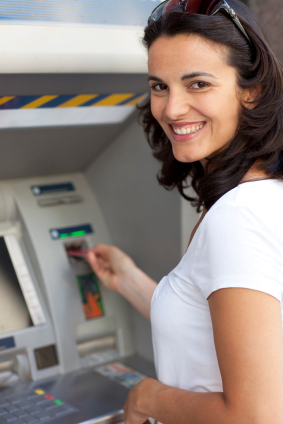How Electronic Banking is Safe | What Is Your Money’s Biggest Threat?
Almost everyone these days uses some form of electronic banking, but just because everyone’s doing it, does that mean it’s safe? And if it is safe, what is our money’s biggest threat?
Andrew Martin wrote a great article about why electronic banking really is safe. Whether we buy something using our debit or credit card, manage our accounts, invest and pay bills online, or withdraw cash from an automatic banking machine (ABM), most of us engage in some form of electronic banking every day.
What Banks Do to Keep Our Financial Information Safe
Andrew points out some of the things financial institutions do to keep our financial information and personal details safe: well lit and monitored areas for bank machines, tamper-resistant ABMs, PIN (personal identification number) protecting shields, sophisticated data encryption and security measures that rival Fort Knox.
Something I didn’t realize, but always thought was odd, was Andrew’s explanation for why our debit card shakes as it’s pushed out of the ABM. It’s not that the machine is about to break down, because it sure can sound that way sometimes, but it’s to “make it more difficult for a skimming device to get a good read of the card’s information.” Who knew!
What We Need to Do to Keep Electronic Information Safe
What it boils down to, and I agree with Andrew’s points here too, is that individuals play an important role in helping prevent fraud. We need to keep the computer or devices we use for online banking free of viruses and other predatory programs by updating our operating system antivirus software regularly. We need to be cautious when we use bank machines and debit/credit card terminals we aren’t familiar with. If we don’t know what the machine is supposed to look like, we don’t know if it has been compromised to steal our personal information from right under our fingertips.
One Easy Way We Can Help Fight Fraud
An additional tip I would add to Andrew’s list is to regularly change the PIN number you use on your cards. Even if your card has been skimmed, the fraudsters still want your PIN to access your account electronically. By changing your PIN to a completely new one every few months, you’ll make it harder for them to use the information they stole.
Your Money’s Biggest Threat
While being conscious of security measures and reporting fraud and/or suspicious activity immediately is important, one more vital consideration is how WE can stop being our money’s worst enemy. Many people aren’t nearly careful enough with how much they spend, and before they know it, they’ve spent their hard earned cash faster than it could have been skimmed.
What It Comes Right Down To
From creating a realistic household budget to strategies to avoiding impulse spending, making wiser choices at the grocery store and not falling for investment scams and debt relief offers that sound too good to be true, the bottom line is that we need to learn better money management skills and equip ourselves with financial information to keep our money right where it belongs – in OUR care and control to use when WE need it.
Related article: New Credit Cards can be Vulnerable to Identity Theft

Comments
Andrew @ She Th... replied on Permalink
Thanks for the mention
Chris replied on Permalink
Card security